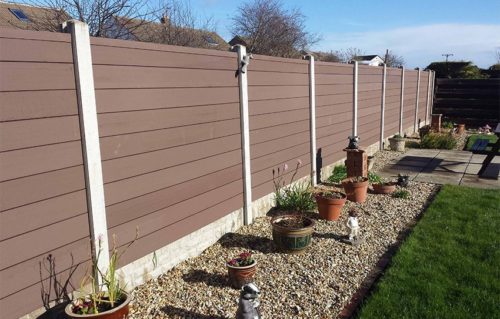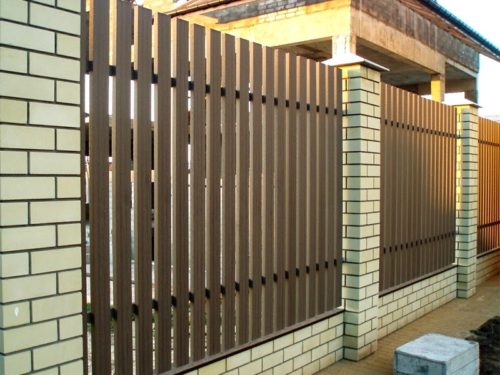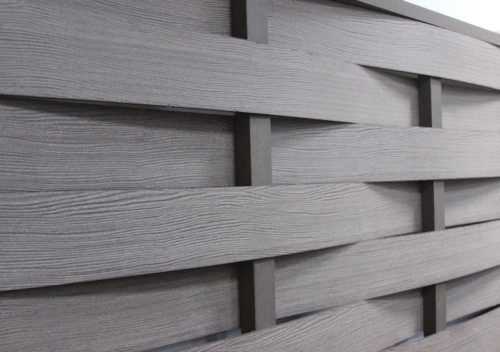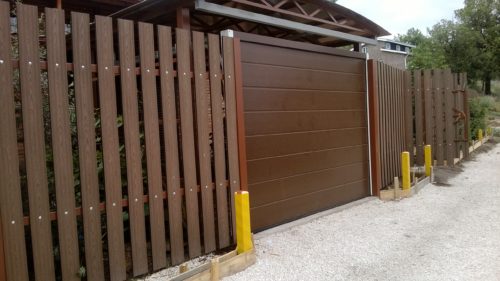
Fences and protections from the KDP with his own hands: the elegance of wood - durability of plastic Construction,Plot.
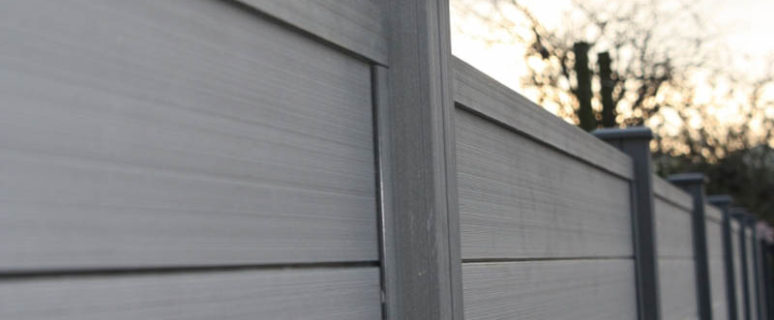
Fence - not just a way to hide from prying eyes private life, it is also a complement to the overall design of the house and gardens. Located in the open air, the hedge must be hardy and durable, and attractive. New popular material for the erection of fences became KDP, and how to install a fence with their hands, we will share in this article.
Content
Fences and protections from the KDP. What is KDP
KDP - a material whose main components are the wood fibers, polymers and wood flour. In fact - it is natural wood, but more robust and durable thanks to a polymeric binder. Fence WPC - a great alternative to the cold concrete or brick construction.
About the features of the production of such material for creating decorative fences and barriers would like to talk more. Production KDP plasticizing involves mixing binder and filler, as well as further polymerization. The filler in this case are the production of wood waste: sawdust, wood chips, straw, or sometimes flax. The polymer is taken as polyethylene, polypropylene or polyvinyl chloride.
Sometimes in the composition of the material to give it a greater strength, a certain structure or appearance, glass, metal particles, color stabilizers and ultraviolet are added, antipyrins. DPK extrusion is performed, that is, mixed components are pushed through the form. Moreover, the constituents are mixed directly in the press extruder. Finished products are opened with varnish, paint or enamel.
In products, the percentage of wood components is different. If chips and sawdust are from 50% to 80%, then the material of the view and properties will resemble MDF. In the event that the polymers occupy most of the most, then the DPK will be more like plastic. The optimal ratio of the components: 50:50.
Decorative fences and fences, photo:
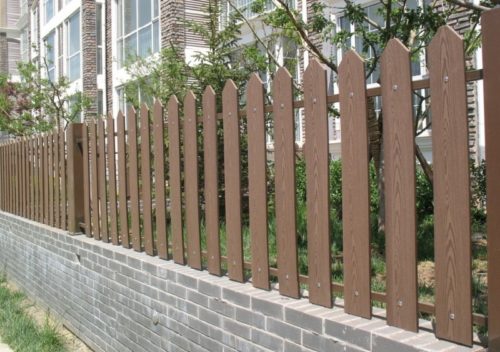
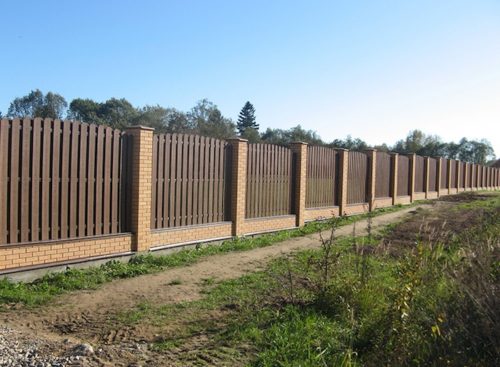
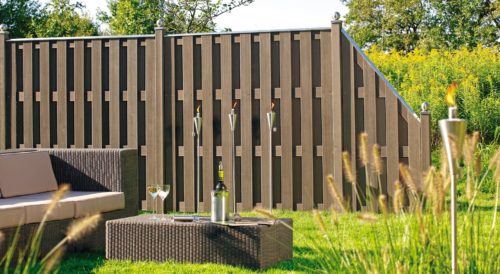
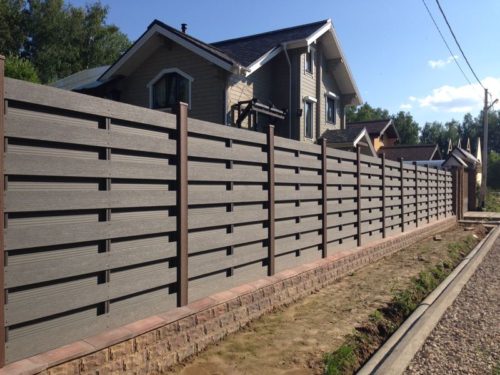
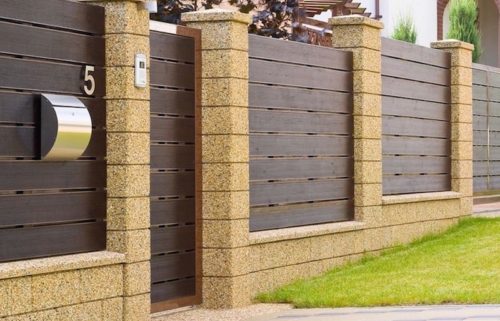
Fences and fences from DPK. Advantages and disadvantages of DPK
Before you decide on the purchase of an DPK to build a fence or fence for home with your own hands, read the pluses and minuses of such a material. Benefits should include such characteristics:
- The material is environmentally friendly, does not contain lead components and does not release formaldehydes into the air.
- Thanks to the polymer components, wood does not suffer from mold, fungi, rotting.
- The fence from the DPK is much more durable than the fence from a natural tree. The term of its operation is 20 years old.
- The material is not afraid of moisture, water, ultraviolet, temperature drops.
- In terms of flammability, DPK is also sufficiently safe.
- A similar fence is distinguished by sound insulation properties, so it devies part of the noise, which is coming from the outside.
- The construction of such a fence often does not require the creation of a foundation. The fence is going easy enough.
- The decorative properties of the fence from the DPK are also at the height. For sale material is represented by an abundance of colors, forms, textures.
Among the disadvantages of the material it is worth highlighting the following:
- The fence from the DPK is able to be damaged from a strong mechanical impact, for example, to suffer from something acute or solid. You can eliminate such defects with a special pencil designed to restore wood.
- From a long exposure to high humidity or critical and critical and critical fenceback temperatures, dimensions can be changed within a few millimeters. In connection with such a feature, fittings manufacturers provide a small gap for the free installation of the details of the fence.
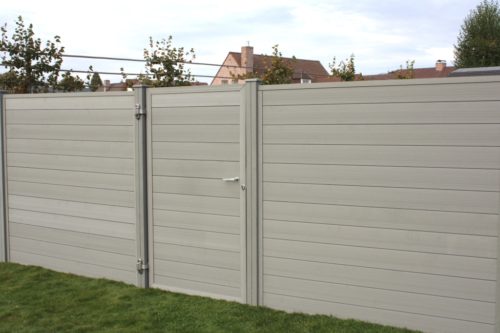
Types of fences from DPK do it yourself
Before assessing a similar wooden plastic fence or fence with your own hands, decide on the type of goods you want to purchase:
- The "Classic" fence - consists of vertical supports, between which narrow vertical stakes are placed.
- Mixed fence - its design includes a stone or brick base, on top of which boards from the composite are placed.
- The "Country" fence is constructed from vertical supports, between which horizontal crossbars are fixed. In the resulting rectangle, two boards form a cross. Similar decorative design of fences and fences from the DPK is very relevant and beautifully in the garden or next to the house made in the same rustic style.
- The hedge of the "Country Plus" looks like an previous option, only in each rectangle, not 2, and 4 or 6 crossbars.
- The name of the fence "Stakenik" speaks for itself. This type of fence is very similar to an ordinary wooden hedge, consisting of narrow boards located vertically at the same distance from each other and bonded from above and below the cross.
- Double stakenik is similar to the previous option, only a plank in it is placed in a checker order in 2 rows. Thus, the fence is obtained by a light-tight and hides a plot from an extraneous eye.
- The deaf fence from the DPK is made up of elements that are so tight to each other, which there is no gaps between them.
- Decorative fencing "Went" - a fence with a pattern of intertwined fine planks forming many small diamonds.
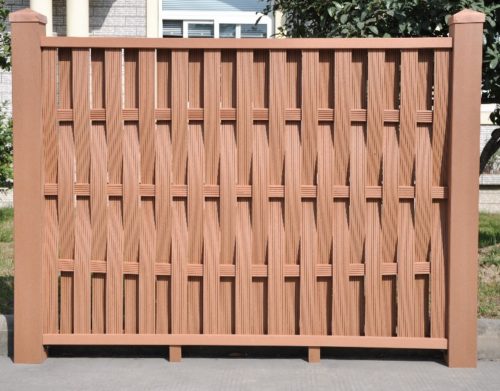
DPK fence design
The fence from the DPK is easy to independently and practically without any special skills in this case. The design of such a fence is quite simple, and all that the collector is required is accuracy and attentiveness. The fence from the DPK has such structural details:
- Support pillars - carrier elements fence. The number of support pillars depends on the length of the entire structure, from the dimensions of the sections.
- Pillar cap plugs are small parts that close the cavities of the supports from the fall of water and dust.
- Decorative blocks for the fence - determine the appearance of the design.
- Frame, plugs for grooves, corners for fixing parts among themselves.
- Complete with some products are also sold decorative elements.
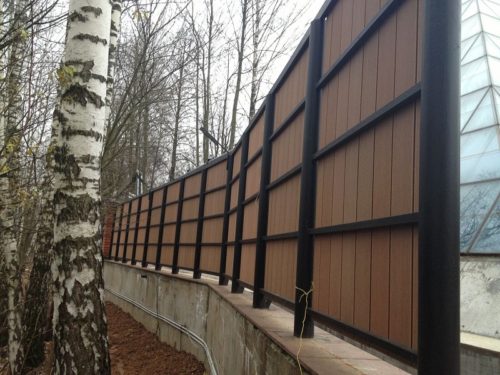
Installation of the fence from DPK do it yourself
- First of all, you need to measure the perimeter of the part of the part and calculate the distance between the supporting columns of the fence. The gaps between the supports can be from 0.5 to 3 m - depending on the type of fence. Stands for the design often protrude pipes from metal, the diameter of which is about 8 cm. It is desirable that such pipes have an anti-corrosion layer that will protect them from adverse weather conditions. In the event that the metal will not have an anti-corrosion coating, under the action of precipitation and fog, it will start rust, leaving ugly stains in the joints of the fencing elements.
- The reference pillars can be fixed or with concrete solution, or with anchors. If the fence is sufficiently light and performs a solely decorative function, screw support pillars can serve as the racks. They are screwed into the ground without further concreting.
- When the bearing racks will be installed, the support profiles of the DPK can be installed on them.
- The next step is the fixation of horizontal profiles or railings that are attached to the support racks.
- Then the installation of the stakenist is made. Details are fastened with a fastener bolt. To establish the crossbar exactly, the work is constantly monitored by the construction level. For mounting in profiles, openings are 8 mm in diameter.
- Final stage - filling the space between support racks. Details are fixed on horizontal profiles.
We figured out how to install a fence or fence from DPK with your own hands, and you will see examples of the fence in the photo:
